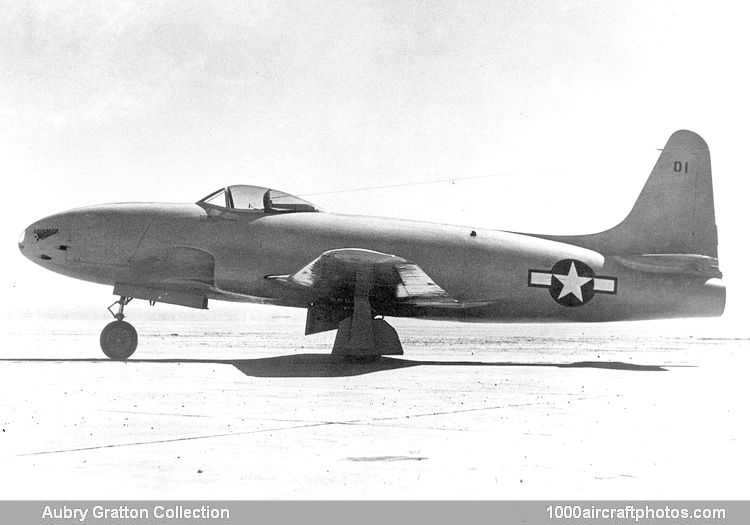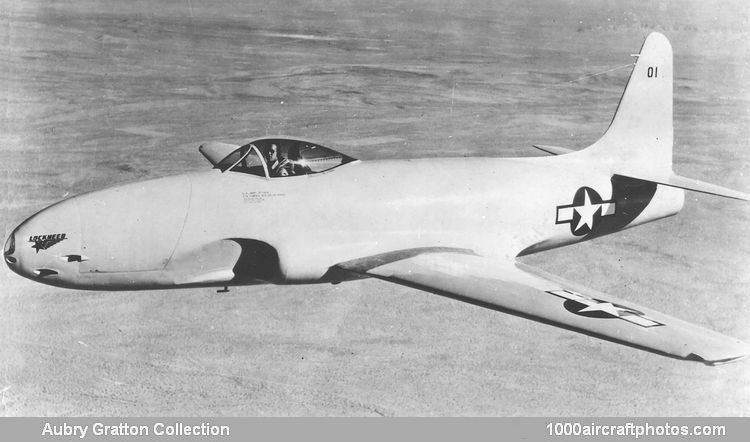06/30/2011. Remarks by Johan Visschedijk: "Each of the two production prototypes, s/n 44-83021 and 44-83022, was powered by a 4,000 lb (1,814 kg) thrust General Electric I-40 turbojet fed by intakes located further aft. The span was 2 ft (0.61 m) larger than that of the XP-80 but wing area was marginally reduced by use of a narrower chord. Length was increased from 32 ft 10 in (10 m) to 34 ft 6 in (10.52 m); maximum weight went from 8,916 lb (4,044 kg) to 13,780 lb (6,250 kg) and necessitated a stronger landing gear. Ammunition for the six machine guns was increased from 200 to 300 rounds per gun and maximum internal fuel capacity was increased from 285 to 485 gal (1,079 to 1,835 l).
In addition, the second XP-80A became the first in the series to be fitted to carry a 165 gal (625 l) drop tank beneath each wing tip. Boundary-layer bleed was retrofitted to the air-intake system during the course of the trial program. The pictured first XP-80A crashed on March 20, 1945, but its test pilot, Tony LeVier, escaped with back injuries suffered in a heavy parachute landing.
The second XP-80A was fitted from the onset with a second seat, aft of the pilot, for an engineering-observer. Later the aircraft was used as a test bed for the Westinghouse J34 axial-flow turbojet in support of the XP-90 program. The intended afterburner for this engine was not initially installed but instrumentation and afterburner fuel lines were housed in a dorsal spine extending from the rear of the canopy to the front of the fin."

